#WEEK8 MDA20009
Explore tagged Tumblr posts
Text
Can Crowdfunding Build a Community for Creatives?
Crowdfunding is a unique and effective way for people who are passionate about something to raise money for their initiatives and meet other like-minded people in the internet era. This kind of internet fundraising can help build lively, involved communities in addition to supporting artistic endeavours. In this blog, we'll examine how crowdfunding might help creatives create a community that supports them as they develop their ideas and engage with the public.
The Power of Crowdfunding
Raising money from a huge number of individuals is known as crowdfunding, and it usually happens through websites like Kickstarter, Indiegogo, and Patreon. By raising money from fans all across the world, it has enabled innumerable musicians, writers, filmmakers, artists, and other creatives to realise their goals.
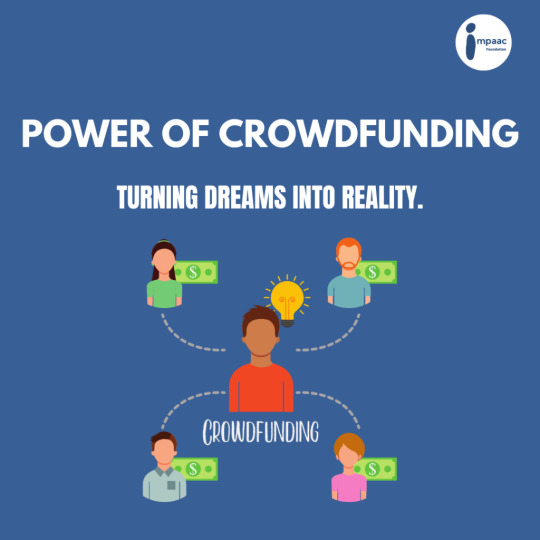
URL Link : https://www.blog.impaac.org/the-power-of-crowdfunding-turning-dreams-into-reality/
Building a Community of Supporters
The ability of crowdfunding to foster personal connections between creators and their audience is one of its most amazing features. Through crowdfunding sites, creators may exhibit their work, tell their experiences, and establish direct connections with possible supporters, in contrast to traditional fundraising approaches.
Creatives build community by communicating with backers and sharing their artistic journeys. An increased sense of connection is felt by supporters with the project and its creators. Between creators and backers, this sensation of belonging has the power to truly transform and forge a link.
Transparency and Trust
One of the core principles of crowdfunding is transparency. Artists need to be open and honest about the status, difficulties, and deadlines of their work. In the community, trust is increased by this transparency. In addition to funding a project, backers are also investing in the creators. They wish to follow the project's development and participate in its creative process.
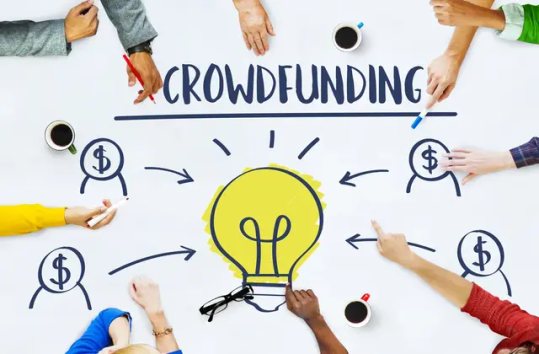
URL Link : https://www.btcpa.com/operational-transparency-key-effective-crowdfunding/
Rewards and Incentives
Creators frequently give backers incentives and rewards to boost support. These could be personalised shoutouts, limited-edition products, early access to the project, or even participation in the creative process. These benefits provide backers a sense of exclusivity and encourage contributions by making them feel like a valued member of the community.
Examples of Successful Crowdfunding Communities
Crowdfunding has been an effective tool for creating communities in a number of artistic endeavours. Here are a handful of noteworthy instances:
Patreon: A Platform for Independent Creators: Patreon is a way for writers, singers, artists, and other creatives to get continuous support from their followers. It creates a membership club where users may access creators' worlds and obtain exclusive content.Kickstarter Campaigns: Numerous imaginative initiatives have been started on Kickstarter. Regular updates, sharing of their work in progress, and communication with backers via messages and comments are all common practises among creators. The exchange fosters a feeling of community.
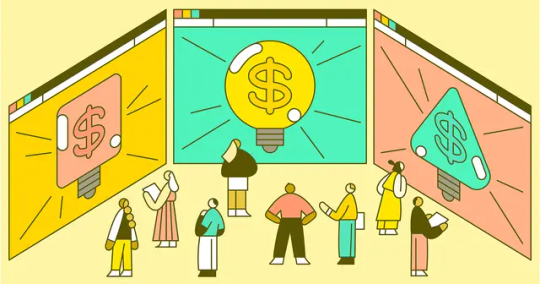
URL Link : https://www.shopify.com/my/blog/crowdfunding-sites
Writers' Communities: A lot of authors have published their novels using crowdsourcing. By asking for feedback on narrative development, names, and even covers, they include backers in the process. The reader-author relationship is strengthened by this active engagement.
Difficulties and Things to Consider
Although crowdsourcing has the potential to foster a creative community, there are several obstacles and factors to take into account.
Creators must be dedicated to supporting their community for the duration of the project and beyond.Managing Expectations: To preserve community trust, reasonable expectations must be set and project deadlines must be met.Fulfilment: Maintaining a good rapport with backers requires successfully meeting commitments and providing benefits.Competition: In order to draw backers, creators on crowdfunding sites must stand out due to the intense competition.
Crowdfunding Communities: A Look Ahead
The crowdfunding industry is still developing. The distinction between established business models and crowdfunding becomes more hazy as new platforms and models appear. Some producers have switched from one-time campaigns to recurring subscriptions, building long-lasting communities and steady revenue streams.
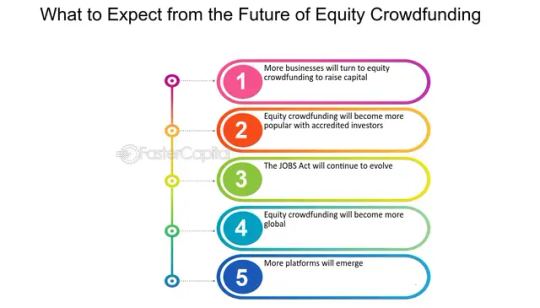
URL Link : https://fastercapital.com/content/The-Future-of-Equity-Crowdfunding--Why-it-s-Becoming-More-Popular-and-What-to-Expect.html
Growing communities around crowdfunding have the power to shape the course of artistic endeavours, spur creativity, and build a community of people who share a love for similar causes or forms of expression.
In summary, the goal of crowdsourcing is community building rather than just financial fundraising. It enables artists to realise their visions and establish connections with a devoted and interested audience. Crowdfunding may create thriving communities that will continue to influence the direction of creative endeavours in the future by offering rewards, transparency, trust, and continuous interaction.
Remember that crowdfunding is about more than just raising money for a project; it's about creating a community of like-minded people that value creativity as you set out on your own creative path or think about helping others. See where crowdsourcing can take you by participating in the discussion and taking part in the trip.
5 notes
·
View notes
Text
The Impact of Fake News on Crowdsourced Information
#MDA20009 #week8
Introduction
In today's digital age, the proliferation of fake news has become a concerning issue. This deceptive information can have a profound impact on crowdsourced data and the communities that rely on it. This blog explores the implications of fake news on crowdsourced information, shedding light on the challenges it poses and offering real-world examples (Dhiman 2023).

Crowdsourcing: The Backbone of Information
Crowdsourcing involves harnessing the collective knowledge and contributions of the public to gather, curate, and share information. It's a powerful tool for everything from Wikipedia to open-source projects. Crowdsourced data has revolutionized the way we access information and has become a valuable resource in a variety of fields. The power of crowdsourcing lies in its ability to tap into the collective wisdom of diverse individuals, leading to richer, more comprehensive information (Hargrave 2022).
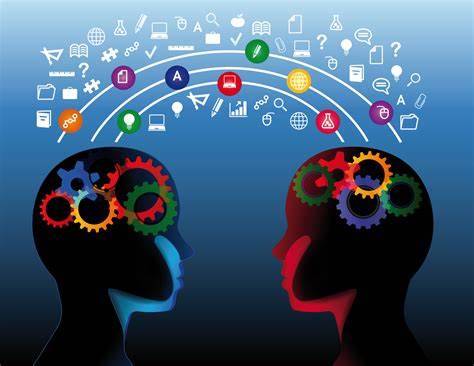
The Rise of Fake News
The internet has given fake news an unprecedented platform to spread. False or misleading information, often disguised as legitimate news, can quickly go viral, causing confusion and distrust among online communities. Fake news can take various forms, from fabricated stories to manipulated images and misleading headlines. The ease of sharing information online, coupled with the increasing polarization of digital communities, has made fake news a persistent problem (Aimeur, Amri & Brassard 2023).

Impact on Crowdsourced Information
Challenge in Verification
One of the most significant challenges posed by fake news is the difficulty in verifying the accuracy of information on crowdsourced platforms. When fake news infiltrates these platforms, it becomes challenging to separate fact from fiction. Take, for example, a crowdsourced map of disaster areas. If it contains information derived from fake news reports, it could lead to misallocation of resources and even put lives at risk (Ludvik 2020).
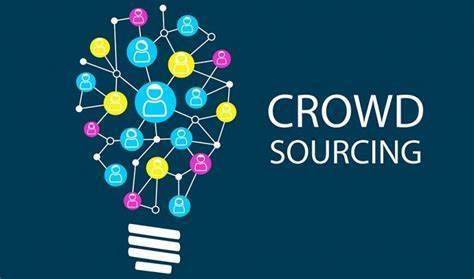
Disrupt and Polarization
Fake news doesn't just cloud the accuracy of crowdsourced data; it also erodes trust within communities. When information becomes tainted by false narratives, it can lead to division and polarization among users. For instance, a heated discussion on a platform like Reddit or Stack Exchange can escalate when fake news is introduced, undermining the collaborative nature of these platforms (Dizikes 2021).

Real-World Examples
Wikipedia Editing Wars
Wikipedia is a prime example of crowdsourced information. It relies on the contributions of volunteers to maintain an extensive and continuously evolving encyclopaedia. Fake news can disrupt this delicate balance, leading to what are known as "editing wars." These wars occur when contributors with conflicting beliefs and biases edit articles on controversial topics to reflect their viewpoints. For instance, articles on climate change have been battlegrounds for editing wars due to the influence of fake news and misinformation (Haviland 2018).

OpenStreetMap and Misplaced Crowdsourced Data
OpenStreetMap, a collaborative project to create a free and open map of the world, relies on contributors to provide accurate geographic data. Fake news can mislead contributors into adding inaccurate or misleading information. In one instance, fake news regarding the location of a prominent landmark led contributors to place it in the wrong place on the map, causing confusion for users and travellers (Novack, Vorbeck & Zipf 2021).

Combining the Impact
Media Literacy
Educating individuals about media literacy is crucial in combating the effects of fake news on crowdsourced data. Encouraging critical thinking and teaching individuals how to fact-check information can help users distinguish between credible and false information. Promoting media literacy not only empowers individuals to discern the accuracy of information but also contributes to a more informed and discerning online community (Lord & Vogt 2021).
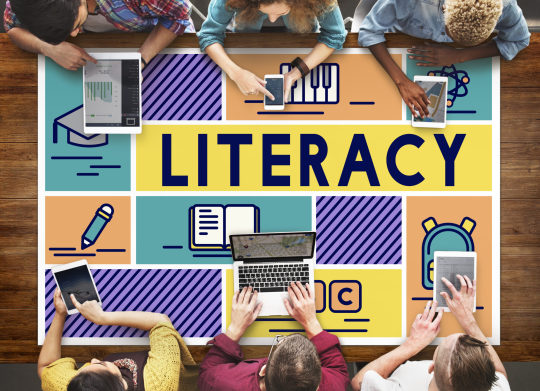
Platform Policies
Crowdsourced platforms can play a vital role in mitigating the impact of fake news. They can implement stricter content policies and fact-checking measures to prevent the spread of false information within their communities. By setting clear guidelines and enforcing them rigorously, these platforms can help maintain the quality and credibility of crowdsourced information (Ng, Tang & Lee 2022).

User Vigilance
Empowering users to report suspicious content can be an effective means of maintaining the quality of crowdsourced information. Many platforms rely on vigilant users to help identify and address fake news. By encouraging users to flag misleading or false content, platforms can more effectively address the problem and maintain the trust of their communities (Zewe 2022).

Collaborative Fact-Checking
Promoting a culture of fact-checking among contributors can be a proactive approach to mitigate the impact of fake news on crowdsourced data. Crowdsourced platforms can encourage users to verify information before contributing it. This can help prevent the spread of false information, improve the accuracy of data, and enhance the overall quality of the shared knowledge (LI & Chang 2023).
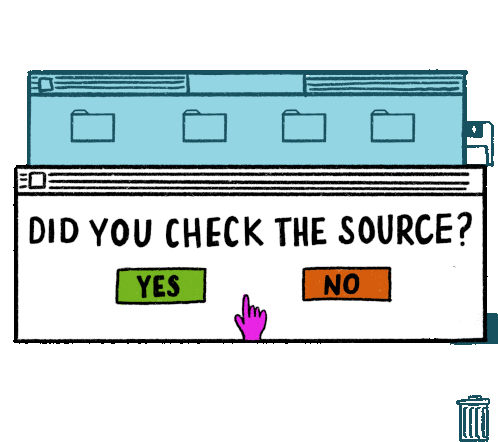
Conclusion
In an era filled with fake news, the effects on crowdsourced information are significant and complex. The examples provided highlight the challenges that communities face when trying to maintain the accuracy and integrity of their shared knowledge. However, by fostering media literacy, enforcing platform policies, promoting user vigilance, and encouraging collaborative fact-checking, we can collectively combat the negative impact of fake news and ensure that crowdsourced information remains a reliable resource in the digital age. Crowdsourcing has the potential to be a powerful force for good, and by addressing the challenges posed by fake news, we can harness its full potential in building a more informed and connected world.
List of References
Aimeur, E, Amri, S & Brassard, G 2023, 'Fake news, disinformation and misinformation in social media: a review', Soc Netw Anal Min, vol. 13, no. 1, viewed 1 November 2023, <https://www.ncbi.nlm.nih.gov/pmc/articles/PMC9910783/>.
Dhiman, B 2023,, 'The rise and impact of misinformation and fake news on digital youth: A critical review', University of Science and Technology, YMCA, 1 May, viewed 1 November 2023, <https://papers.ssrn.com/sol3/papers.cfm?abstract_id=4438362>.
Dizikes, P 2021, 'Study: Crowds can wise up to fake news', MIT News, 1 September, viewed 1 November 2023, <https://news.mit.edu/2021/crowd-source-fact-checking-0901>.
Hargrave, M 2022, Crowdsourcing: Definition, how it works, types, and examples, Investopedia, viewed 1 November 2023, <https://www.investopedia.com/terms/c/crowdsourcing.asp#:~:text=Crowdsourcing%20is%20the%20collection%20of%20information%2C%20opinions%2C%20or,skills%20or%20thoughts%20from%20all%20over%20the%20world.>.
Havilland, E 2018, 'Competing with or against crowds', Digital Innovation and Transformation, 19 March, viewed 1 November 2023, <https://d3.harvard.edu/platform-digit/submission/wikipedia-the-ultimate-crowdsourced-knowledge-tool/>.
Li, J & Chang, X 2023, 'Combatting misinformation by sharing the truth: a study on the spread of fact checks on social media', Information Systems Frontiers, 11 June, viewed 1 November 2023, <https://link.springer.com/article/10.1007/s10796-022-10296-z>.
Lord, KM & Vogt, K 2021, 'Strengthen media literacy to win the fight against misinformation', Stanford Social Innovation Review, 18 March, viewed 1 November 2023, <https://ssir.org/articles/entry/strengthen_media_literacy_to_win_the_fight_against_misinformation#>.
Ludvik, E 2020, The impact and role of crowdsourcing in the information age, Crowdsourcing Week, viewed 1 November 2023, <https://crowdsourcingweek.com/blog/the-impact-and-roles-of-crowdsourcing-in-the-information-age/>.
Ng, KC, Tang, J & Lee, D 2022, 'The effect of platform intervention policies on fake news discrimination and survival on empirical examination', Journal of Management Information Systems, vol. 38, no. 4, viewed 1 November 2023, <https://www.tandfonline.com/doi/full/10.1080/07421222.2021.1990612>.
Novack, T, Vorbeck, L & Zipf, A 2021, 'An investigation of the temporality of OpenStreetMap data contribution activities', Geo-spatial Information Science, 7 October, viewed 1 November 2023, <https://www.tandfonline.com/doi/full/10.1080/10095020.2022.2124127>.
Zewe, A 2022, 'Empowering social media users to assess content helps fight misinformation', Massachusetts Institute of Technology, 16 November, viewed 1 November 2023, <https://www.sciencedaily.com/releases/2022/11/221116150648.htm>.
3 notes
·
View notes
Text
In an era filled with fake news, what effect can this have on crowdsourced information?

In today's digital age, the rapid dissemination of information has empowered individuals to contribute to a collective pool of knowledge through crowdsourcing. Crowdsourced platforms harness the diverse perspectives of the online community to generate, validate, and curate information. However, the pervasive issue of fake news threatens the very foundation of crowdsourced information, raising questions about its reliability and impact. In this article, we explore the profound effects of fake news on crowdsourced information and delve into potential strategies to mitigate these challenges.
Trust in the Era of Misinformation:
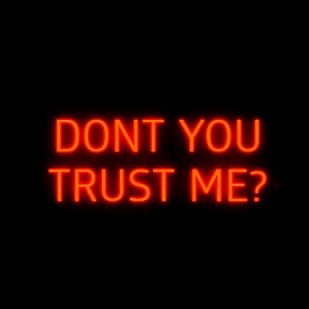
The credibility of crowdsourced information is intricately connected to the reliability of its contributors, as emphasized by Lamprou et al. (2021). In the contemporary landscape saturated with the proliferation of fake news on social media and various online platforms, the trustworthiness of information sources is under constant threat (Lamprou et al., 2021). In such an environment, individuals who rely on crowdsourced data face a growing challenge in distinguishing accurate information from the overwhelming sea of misinformation. This heightened difficulty in discernment contributes to a decline in overall trust in crowdsourcing platforms. As users grapple with the influx of unreliable data, the very foundation of crowdsourced information, dependent on the collective wisdom of contributors, is susceptible to erosion, necessitating a nuanced approach to address the trust crisis in the era of fake news.
Validation in the Face of Deception:
At the heart of crowdsourcing lies the fundamental principle of collectively validating information, as emphasized by Lamprou et al. (2021). However, this foundational concept faces a formidable challenge in the prevalent era of fake news. The insidious spread of misinformation introduces a novel layer of complexity to the collective validation process, requiring contributors to navigate a landscape where distinguishing fact from fiction becomes an increasingly daunting task. The very essence of crowdsourcing relies on the accuracy of information, yet contributors find themselves grappling with the arduous challenge of upholding this accuracy amidst the deluge of misleading content. As misinformation proliferates, the validation mechanisms inherent in crowdsourced platforms are put to the test, prompting a critical evaluation of their efficacy in maintaining the integrity of the information verification process. The struggle to discern the truth in the face of misinformation underscores the intricate dynamics at play within the crowdsourcing paradigm.
Impact on Decision-Making:

The impact of fake news on crowdsourced information reverberates through decision-making processes, encompassing realms from journalistic endeavors to policy formulation, as articulated by Chiu et al. (2014). Decisions grounded in flawed crowdsourced data can carry tangible consequences in the real world. The pervasive influence of misinformation within the information landscape poses a formidable challenge for decision-makers. Navigating through this tainted environment requires heightened vigilance and an urgent implementation of additional measures to ensure the accuracy of crowdsourced information (Chiu et al., 2014). Chiu et al.'s insights underscore the critical need for a meticulous and discerning approach in utilizing crowdsourced data for decision-making, emphasizing the potential repercussions that misinformation can have across various sectors and the imperative for safeguarding the integrity of the information utilized in decision-making processes (Chiu et al., 2014).
Mitigation Strategies in the Digital Age:
Addressing the intricate challenges posed by fake news within the realm of crowdsourced information necessitates a comprehensive and proactive strategy. Crowdsourced platforms should deploy robust mechanisms designed to detect and filter out misinformation seamlessly integrated into their systems. Simultaneously, initiatives focused on education and awareness campaigns directed at contributors become essential, enabling individuals to develop a critical eye in evaluating information and thereby curbing the inadvertent propagation of misinformation. Furthermore, the integration of technological advancements plays a pivotal role in mitigating the impact of fake news on crowdsourced information. Leveraging machine learning algorithms and automated tools stands out as a particularly effective approach, allowing for the identification and removal of false information. The implementation of such technological solutions serves to enhance the overall quality and reliability of crowdsourced datasets, fostering a more trustworthy information ecosystem (Tucker et al., 2018).
Conclusion:
In conclusion, the era of fake news has profound implications for crowdsourced information. The trustworthiness of contributors, the validation processes, and the impact on decision-making all highlight the critical need for vigilance and innovation in the realm of crowdsourcing. By embracing technological advancements and empowering contributors with the tools to navigate the complexities of misinformation, we can strive to build a more resilient and reliable foundation for crowdsourced information in the digital age.
List of References:
Chiu, C-M, Liang, T-P & Turban, E 2014, ‘What can crowdsourcing do for decision support?’, Decision Support Systems, vol. 65, pp. 40–49.
Lamprou, E, Antonopoulos, N, Anomeritou, I & Apostolou, C 2021, ‘Characteristics of fake news and misinformation in Greece: The rise of new crowdsourcing-based journalistic fact-checking models’, Journalism and Media, vol. 2, no. 3, pp. 417–439.
Tucker, JD, Pan, SW, Mathews, A, Stein, G, Bayus, B & Rennie, S 2018, ‘Ethical concerns of and risk mitigation strategies for crowdsourcing contests and Innovation Challenges: Scoping Review’, Journal of Medical Internet Research, vol. 20, no. 3.
4 notes
·
View notes
Text
Omegalul-ing through the pain: Online harassment and cyberbullying against women in the gaming community
As a girl in the gaming community, I have been extremely lucky in terms of interacting with strangers online. I have made many online friends through games and Discord and even developed connections more intimate than people I know in real life (iykyk). However, the same cannot be said for women and many others that belong in the minority groups that use the internet. As gaming is a traditionally and stereotypically white male-dominated activity, minorities can easily become the target of unwanted attention due to factors such as stereotypes, racism, homophobia, transphobia and misogyny. In the gaming industry, 20% of female players have encountered sexual harassment in the form of objectifying remarks, death threats, or rape threats from male or other players (Bougacha 2022). In reality, according to a poll done in the US, Germany, and China, 59% of women conceal their gender to avoid sexism and violence (Bougacha 2022). Harassment online comes in many forms such as slurs, death threats, doxxing or the act of disclosing personally identifiable information about someone online without their consent, including their true name, address, phone number, and financial and other details (Kaspersky 2023).
Online harassment in the gaming community is not just experienced in-game but it can occur in any other online spaces that allow open interaction between players and users. Community platforms such as Discord, Twitch and YouTube are spaces that gamers and non-gamers visit often thus making it easier to become a victim of virtual harassment and cyberbullying. In even more extreme cases, these online harassment can move offline too. Amouranth, a popular Twitch streamer and OnlyFans model, has had many online and offline stalker encounters. In 2022, a guy from Estonia was detained when he attempted to enter Amouranth's house (Gwilliam 2023). This happened after he apparently sold all of his possessions in a last-ditch effort to meet the model and start a relationship with her (Gwilliam 2023). Amouranth mentioned that she was scared for her life as this man had been routinely walking around her neighbourhood while hosting a Twitch stream called “Find Amouranth and Make Her Mine” (Moore 2022).
Amouranth’s case is only one among a countless number of women that risk their lives everyday despite not doing anything wrong. Women are not safe from harassment no matter online or offline. While gaming communities and platforms should do more to protect vulnerable groups like women, they cannot be blamed 100% because if people want to hurt minority groups, they will bypass any moderation and censors to get to the individual. While platforms should aim to provide better protection for everyone, especially women and resistless groups, we should all learn to follow cyber etiquette to ensure a safe online experience for all.
References
Bougacha, S 2022, Gaming: Hidden Sexism and Harassment, IVolunteer International, viewed 12 June 2023, <https://www.ivint.org/gaming-hidden-sexism-and-harassment/>.
Gwilliam, M 2023, Amouranth says stalker tried breaking into her house again and left mysterious package, Dexerto, viewed 12 June 2023, <https://www.dexerto.com/entertainment/amouranth-says-stalker-tried-breaking-into-her-house-again-and-left-mysterious-package-2076350/>.
Kaspersky 2023, What is Doxing – Definition and Explanation, Kaspersky, viewed 12 June 2023, <https://www.kaspersky.com/resource-center/definitions/what-is-doxing>.
Moore, E 2022, Amouranth Stalker Arrested After Travelling From Europe For Alleged Break-In Attempt, Gaming Bible, viewed 12 June 2023, <https://www.gamingbible.com/news/amouranth-stalker-arrested-following-alleged-breakin-attempt-20220616>.
#mda20009#digital communities#digitalcommunities#week8#week 8#social media governance#cyberbullying#online harassment#amouranth#twitch#discord#youtube#reddit#doxxing
3 notes
·
View notes
Text
Crowdsourcing (mm basic)

What is Crowdsourcing?
The word "crowdsourcing" was coined by a writer called Jeff Howe in a June 2006 story published in Wired Magazine. He proposed the following definition of crowdsourcing:
"Crowdsourcing is the act of a company or organisation adopting a function previously performed by staff and outsourcing it in the form of an open call to an undefined (and generally huge) network of people." (Howe, 2006)
Crowdsourcing, in essence, is an open invitation for anybody to contribute in completing a task in cyberspace (Brabham, 2008; Howe 2008). The term "anyone" does not always refer to everyone. The criterion for the crowd or those asked to participate, according to Enrique Estellés-Arolas and Fernando González-Ladrón-de-Guevara (2012), must be explicit. They must be able to access the internet and possess information, knowledge, and abilities relevant to the job assigned.
Crowdsourcing is always related with the internet since internet facilities are utilised to collect data from the public in order to cover any location and at any time. According to the findings of Enrique Estellés' (2012) research, persons that participate in crowdsourcing form an association with a variety of traits, heterogeneity, and expertise that is dictated by the needs of the crowdsourcing activity being carried out (Estellés & González, 2012). Although anyone can engage in crowdsourcing, the crowdsourcing implementer expects participants to be knowledgeable about the crowdsourcing theme and to offer data that is reliable and not fabricated.
The crowdsourcing system has been widely used for a variety of objectives. Begin by mapping needs (crowdmapping), then move on to innovation processes, creative and entertainment activities, journalism, crowdfunding, democratic processes, and social movements. Some tangible examples of social movements employing crowdsourcing tactics include:
Harassmap, founded in 2010 by Rebecca Chiao, is an interactive map that collects accounts of abuse suffered by women or other victims. This initiative aims to combat sexual violence in Egypt.
Kuhonga is a Nairobi-based website that maps corruption. The website allows Kenyans to report corruption situations in real time using mobile applications, email, social media, or the website itself. This website addresses corruption in government, law enforcement, immigration and customs, educational institutions, and companies.
Howe, J. 2006. The Rise of Crowdsourcing. Wired Magazine (Vol. 14, pp.1-4)
Howe, J. 2008. Crowdsourcing: why the power of the crowd is driving the future of business.New York: Crown Business

4 notes
·
View notes
Text
Crowdsourcing in times of crisis
Crowdsourcing is when information, work, and opinions are gathered from a crowd through the Internet, applications or even social media. In fact, most of the information that can be found on the Internet is crowdsourced! Crowdsourcing is a good way to solve many problems in a short period of time. It doesn’t cost much to crowdsource information and it also provides you with different perspectives, as opinions are being crowdsourced as well. Generally, crowdsourcing is effective for various reasons.

The question is, can crowdsourced information during times of crisis mobilise the public into action? Yes. Take the white flag movement in Malaysia as an example. The #benderaputih (white flag) movement was started on social media by Malaysians who were in need of food and supplies during the COVID-19 pandemic. Many lost their job due to the COVID-19 pandemic and they didn’t have any other alternatives to put food on the table. The movement required those in need of supplies and food to hang a white flag or cloth in front of their homes (Rodzi 2021). Neighbours can then provide them with assistance, either by donating supplies and food or by posting about the situation on social media so that organisations can donate to them.

According to Chung (2021), three students from Multimedia University (MMU) developed a web application that played an important part in the movement. After realising that there was no centralised platform to connect those in need and those able to help, they developed a crowdsourcing platform, Sambal SOS. Those who need help can visit the web browser at https://www.sambalsos.com/ and send an SOS to get help or access the locations of food banks. Others get to report those putting up white flags from the app. The development of this web browser was praised by Malaysians due to its convenience.
Crowdsourcing is a reasonable practice, especially for organisations to look for a fresh set of ideas or solutions, all possible from the power of the crowd.
References:
Chung, N 2021, White flag campaign - MMU students create app to help, Free Malaysia Today (FMT), viewed 12 November 2022, <https://www.freemalaysiatoday.com/category/nation/2021/07/06/white-flag-campaign-mmu-students-create-app-to-help/>.
Rodzi, NH 2021, Malaysians launch white flag campaign to signal distress without begging, The Straits Times, 30 June, viewed 12 November 2022, <https://www.straitstimes.com/asia/se-asia/malaysians-launch-white-flag-campaign-to-signal-distress-without-begging>.
2 notes
·
View notes
Text
Crowdsourcing and how it improves the Internet we live in.
Most times, many things on the Internet that we interact with and see are user-generated content, be it art, articles or even music. it was created by someone with the intention to be creative, to be informative and share their creativity with other like-minded people. The internet itself was first invented to be a system to share information through a network.
Sharing information and ideas then becomes the way the internet is heading into. A hivemind of collective information at the fingertips of a person that is all crowdsourced. Crowdsourcing is a process of exploring ideas and information that is available from a significant source of people with the intent of using the information to solve a problem or improve some form of quality work.
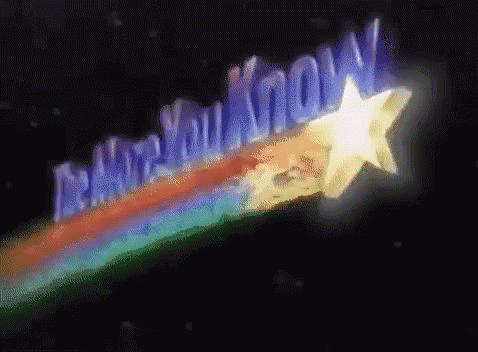
One way that crowdsourcing improves the internet is the improvement of information that is being shared to people all around. websites like Wikipedia happens to be a free encyclopedia that is created and edited by people all around the world. This means that anyone is able to share their information about a topic. But that also means that fake information can spread but this is not an issue as long as it is factual and there is references to back it up.
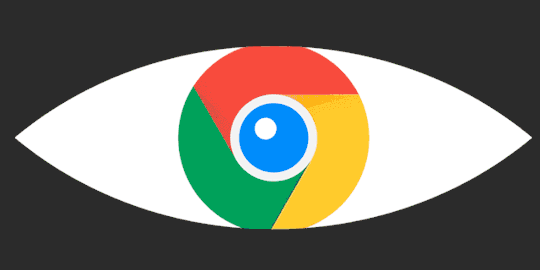
Besides just Wikipedia, crowdsourcing helps people that just needs help with things that they need to troubleshoot. Have you ever had the issue where you're suddenly faced with a problem and the first thing you do is either call your parents or Google it. Googling a solution has become such a common way of trying to figure out how to solve a problem that it becomes the first thing we think of doing. People that shared their problems and the ways they have solved the problem become information crowdsourced for the next batch of people to search for.
Another way crowdsourcing improves the internet is the way it shares things. While not just sharing written information, crowdsourcing can also be a form of sharing digital data. Sharing happen in networks all around the internet such as in centralised network with a server centered around it or like a decentralised network that acts like peer-to-peer sharing.
2 notes
·
View notes
Text
Week 8: Body Modification on Visual Social Media
In the context of visual social media, the term "body modification" refers to a wide range of behaviours and trends that individuals engage in while attempting to alter their physical appearance. These alterations are frequently affected by the material that people come across on the internet today. There is a plethora of photographs and videos featured on social media platforms such as Instagram, TikTok, and Snapchat that showcase idealised body types. These images and videos are frequently altered through the use of filters, photo editing, and cosmetic surgery. The excessive beauty standards that are set by influencers and celebrities, who frequently display their altered looks, make many users feel as though they are obligated to adapt to these norms.
The shift in body perception exhibited by persons who use social media platforms is a significant consequence that arises as a result of these behaviours. It is possible for individuals to develop a negative body image as a consequence of being exposed to digitally edited photographs. This occurs when individuals consider their own bodies to be inadequate in comparison to the unrealistic ideals projected on the internet. This can result in a variety of psychological issues, such as a lower sense of self-worth, increased anxiety, and body dysmorphic disorder, which is a condition that is marked by an excessive preoccupation with perceived faults in one's physical appearance. “Social media photo manipulation is linked to increased cosmetic procedure attitudes and intentions, facial dissatisfaction, and appearance-based self-discrepancy. Sharing selfies online and receiving positive comments as regards appearance may shape users' subsequent behavior as regards image as a valued commodity considering audience feedback.” (Brian 2022)
In addition, the desire to achieve these idealised features might force individuals to go through a variety of different kinds of physical transformations. Aesthetic operations like as liposuction, rhinoplasty, and breast augmentation are included in this category. Additionally, non-invasive treatments such as Botox, fillers, and skin rejuvenation procedures are also included. Despite the fact that these adjustments have the potential to increase self-confidence in certain individuals, they also come with significant risks, such as the danger of developing a dependency on cosmetic treatments, the complexity of medical procedures, and the financial burdens that are associated with them. “People try to change their appearance to gain social acceptance.” (Garousi, Dolatabad & Garrusi 2017)
It is vital to advocate for media literacy and give consumers with knowledge on the reality of digital manipulation and the varied expressions of beauty in order to alleviate these negative impacts. This will help to alleviate as many of these negative effects as possible. Educating consumers about the importance of maintaining a critical perspective when interacting with information on social media platforms enables them to recognise that a considerable proportion of the photographs they come across do not adequately portray reality. Furthermore, the promotion of a culture that promotes self-acceptance and body positivity, as well as celebrates a wide diversity of body forms, can be an effective means of combating the influence of societal expectations to comply to restrictive beauty standards. A more positive relationship between social media and body image can also be fostered by providing information and aid to persons who are struggling with issues related to their body image, as well as advocating for methods of transforming one's body that are reasonable and within one's reach.
Refrences
Brian, C 2022, “Social Media Photo Manipulation, Beauty Ideal Internalization, and Problematic Body Image,” Journal of Research in Gender Studies, vol. 12, no. 1, pp. 39–53, viewed <https://www.proquest.com/docview/2717875294?accountid=14205&pq-origsite=primo&sourcetype=Scholarly%20Journals>.
Garousi, S, Dolatabad, RK & Garrusi, B 2017, “Concerns about body change behaviors, and construction of flexible masculinity among Iranian students,” Quality and Quantity, vol. 51, no. 6, p. 2831+, viewed <https://go.gale.com/ps/i.do?p=AONE&u=swinburne1&id=GALE%7CA739911454&v=2.1&it=r&aty=sso%3A+shibboleth>.
0 notes
Text
Week 8: Body Modification on Social Media
Welcome to Lam’s Blog!
Jean Baudrillard once proposed the concept of "hyperreality," which is a state between "simulacra" and "simulation" (Baudrillard 1994). Under the dominance of technology, are the bodies shown in the media real, or are they illusions created by people? Do the public have the ability to perceive themselves immersed in this technological logic? Comment your thoughts below :) I’d love to hear your voice.
Since the beginning of the 21st century, the rise of social media has reshaped the mode of information dissemination and interpersonal communication on a global scale. In this process, social media platforms have become an important place to shape and spread body modification. Body modification specifically refers to a person's changes to their human body for aesthetic, cultural, or social reasons, such as tattoos, piercings, and even tongue splitting. These changes can be a form of self-expression, a way to connect with cultural traditions, or simply an artistic choice (Mike 2000, p.6).
Social media platforms, especially visual ones like Instagram and TikTok, have become hotspots for showcasing these transformations. Influencers and everyday users alike share their body modification journeys, often to a massive audience (Misman 2024). With the penetration of commercialization and marketization, social media platforms have begun to continuously pursue more user engagement and advertising revenue. In this process, the content of body modification on social media has gradually been commercialized and has become a means of attracting attention and increasing user stickiness.
From a business and market perspective, the rise of body modification content on social media has led to a substantial increase in commercial interests in this field, helping capital and companies to gain benefits and influence through sponsoring content, advertising, or establishing partnerships with internet celebrities. A large number of Key Opinion Leaders (KOLs) are active on social media. With the help of social media, they convey aesthetic orientations and concepts to the public and influence people's perception of beauty. Evaluation standards such as the "A4 waist" and "BM girl" have emerged, emphasizing the aesthetics of "white, thin, and young" women.
The idealized images presented on social media affect women's perception of their bodies, leading to more dissatisfaction with their bodies, and thus taking measures such as monitoring their bodies and dieting to help themselves achieve the ideal body they want. However, these measures may cause eating disorders in women. In this dilemma of modern social media, the only way for users to rationalize "breaking the situation" is to shape a healthy self-image through their own efforts and a positive attitude. This is why more and more users are beginning to reflect on the body modification content on social media and seek more authentic and diverse ways of self-expression.You can tell celebrities and influencers play a massive role in popularizing certain types of body modifications.

Another example, John Yuyi, born in Taiwan in 1991 and currently living in New York, is known for her social media presence. Her early work includes digital symbols applied to the human body as temporary tattoos. In an ongoing series of studies on the intersection of the physical and technological worlds, Yuyi works in multiple fields such as tattoo art, photography, performance, and character creation. She uses the body as a canvas and screen to explore people's addiction to social media and the mark it leaves on our lives (The Fashionography 2021). She tattooed the brand's logo on her skin and then posted her self-portrait on Instagram as an advertisement. In this way, she showed how "the body becomes a carrier of media attention on social networks." At the same time, she demonstrated how our bodies are occupied by these platforms. They affect how we show and perceive ourselves—and determine the value we give ourselves. Her works have been favored by and collaborated with brands such as Gucci, The New York Times, and Carven. Known as the "Willy Wonka of the art world," she is now one of the most creative artists on Instagram (Dew Magazine 2018).
I’ve always been fascinated by body modification and its ability to tell a story about who we are. Social media has opened up a whole new world of possibilities and connections, making it easier to explore and embrace these changes. Remember to do thorough research, consult professionals, and most importantly, make choices that feel right for you. Body modification is a journey, and social media is just one of the many tools you can use to navigate it.
Thanks for reading! If you have any questions or want to share your own experiences, drop a comment below or reach out on social media. Let’s keep the conversation going!
References
Baudrillard, J 1994, Simulacra and Simulation, University of Michigan Press, Ann Arbor.
Dewmagazine 2018, ‘John Yuyi and Her World - DEW Magazine’, DEW Magazine, 31 May 2024,
<https://www.dewmagazine.com/john-yuyi-world>
The Fahsionography 2021, ‘John Yuyi. The Passionate Bravery of Progressive Visual Artist.’, The Fashionography, viewed 31 May 2024,
<https://thefashionography.com/the-visionary/john-yuyi-interview/.>
Mike, F 2000, Body Modification, SAGE Publications, London.
Misman, N 2024, ‘MDA 20009 Digital Communities, Week 8: Body Modification on Social Media ’, MDA20009 Digital Communities, Learning materials via Canvas, Swinburne University of Technology, 18 May, viewed 31 May 2024.
#mda20009#digital communities#body modification#social media#masscommnication#body modification on social media#week8
0 notes
Text
Week 8: Body Modification on Visual Social Media
welcome back to nn’s blog ♡₊˚ 🦢・₊✧
Hello there!! It’s been a while peeps! Anyway, today I’m back with another blog post, and this time we’re diving into a topic of body modification on visual social media. So now, let’s get into it!

We all know body modification has always been a part of human culture, from tattoos and piercings to more extreme forms like scleral tattoo and bifurcation. But with the rise of visual social media platforms like Instagram, TikTok, and Pinterest, it’s taken on a whole new dimension.
a quick question -ˋˏ✄┈┈┈┈
Have you ever scrolled through your feed and been stunned for a second because of some jaw-dropping body tattoo art, piercings or other body modification scenes that makes you think, “Wow, that’s so cool!”?
Not gonna lie, I also feel the same way 😗
Social media has provided a platform for people who are interested in body modification to show off their unique styles and connect with likeminded people around the world.
Now let’s talk about some influencers who are killing it in the body modification scene. Take Caitlyn Jenner as the first example, her journey and transformation have been highly publicized, and she uses her platform to promote self-expression and authenticity. By sharing her story publicly, Caitlyn challenges conventional beauty standards and inspires others to embrace their true selves (Bissinger, Leibovitz & Diehl 2015). Caitlyn also wrote a book, “The Secrets of My Life,” where she reveals her struggles and experiences throughout her transition (Steinmetz 2017). In this book, her candidness about her experiences has led to a discussion about gender identity and the significance of living authentically.

y’all can read through this link below to know more about her story
Next, we have Jeffree Star., which known for his bold makeup looks and striking tattoos. Jeffree is a major figure in both the beauty and body modification communities. He uses his large social media following to encourage his fans to embrace their individuality. Despite his success, Jeffree often faces hate and criticism for his bold fashion choices and unapologetic personality. However, his fearless approach to body art and fashion serves as a reminder that beauty is diverse and multifaceted (Star 2018).
youtube
@/jeffreestar on YouTube He posted a video on YouTube where he reads some of his hate comments, showing how he handles negativity with humor and resilience
Then there's James Charles, a makeup artist and influencer who has also made waves in the body modification scene. While James is primarily known for his makeup skills, he often shares his experiences with piercings and other forms of body art. His content not only highlights the aesthetic aspects of body modification but also emphasizes the importance of self-confidence and self-expression. Like Jeffree, James also receives a fair share of hate and negative comments, but he continues to inspire his followers by staying true to himself and his unique style (Charles 2020).

@/jamescharles on Instagram He received a lot of hate comments about his hairstyle but he somehow refers to these haters' suggestions and fights back against them in his own way
But let’s dig a bit deeper. Social media also plays a role in shaping our perceptions of beauty and self-worth through aesthetic templates. These templates, like the hyper-feminine or hyper-masculine looks, can influence how we see ourselves and others. The “pornification” of beauty standards, where sexualized and exaggerated features become the norm, can sometimes lead to unrealistic expectations and pressure to conform (Attwood 2018). However, body modification can also be a powerful tool for promoting self-confidence and a healthy lifestyle. It’s all about expressing who you are and feeling good in your own skin. For many, getting a tattoo or a piercing isn’t just about following a trend; it’s about reclaiming their bodies and telling their stories (Pitts 2003).
So, how can we navigate this space while promoting self-confidence and a healthy lifestyle? In my perspective, I do think it’s important to make decisions that feel right for you, not because of social media trends.
"Remember that true beauty comes from being authentic and embracing your unique self."
Do u guys agree with this statement? I'm totally agree with it anyways hahahha
well this is the end of my blog for today! and I'd love to hear the thoughts from you guys! stay tuned for my next blog <3 see ya!
Reference
Attwood, F 2018, Mainstreaming Sex: The Sexualization of Western Culture, IB Tauris, London.
Bissinger, B, Leibovitz, A & Diehl, J 2015, Caitlyn Jenner: The Full Story, Vanity Fair, viewed 5 June 2024, https://www.vanityfair.com/hollywood/2015/06/caitlyn-jenner-bruce-cover-annie-leibovitz.
Charles, J 2020, Handling Hate Comments, YouTube, viewed 5 June 2024, https://www.youtube.com/watch?v=example.
Pitts, V 2003, In the Flesh: The Cultural Politics of Body Modification, Palgrave Macmillan, New York.
Star, J 2018, Reading Mean Comments, YouTube, viewed 5 June 2024, https://www.youtube.com/watch?v=example.
Steinmetz, K 2017, Caitlyn Jenner Memoir 'Secrets of My Life': 9 Revelations, TIME, viewed 5 June 2024, https://time.com/4753565/caitlyn-jenner-memoir-secrets-life/.
0 notes
Text
Week 8: The motivation for using AR beauty filters
Selfies have become an extremely popular culture on digital media platforms such as Facebook, Instagram, and Snapchat. It is estimated that every third photo people from 18 to 24 years old take is a selfie (Zetlin 2019). As the selfie trend continues to rise, there's an increasing demand for beauty features in various technologies, particularly in smartphones and social media apps. Instagram is one of the digital platforms that is famous for its beauty features which help users create visually appealing and engaging content (Vendemia & DeAndrea 2018). Augmented Reality (AR) filter is one of them. Since it appeared, AR filters have achieved an impressive number of users. It is reported that there are 600 million people use AR filters each month on Instagram or Facebook and 76% of Snapchat users use them every day (Bhatt 2020). In this post, we will discover the motivation for using AR face filters on social media.
It is suggested that the possible motivation for using AR face filters is related to self-presentation, enjoyment, social interaction, and convenience (Erz, Marder & Osadchaya 2018; Rauschnabel 2018; Sheldon et al. 2017; Throuvala et al. 2019).
Self-presentation
There are three distinct motivations prompting individuals to engage with augmented reality (AR) filters for self-presentation (Javornik et al. 2022). Firstly, users may employ these filters to authentically express facets of their true selves, which they might feel constrained from revealing in traditional face-to-face interactions (Javornik et al. 2022). Despite virtual alterations, these filters offer a platform for genuine self-expression, often inhibited offline (Javornik et al. 2022). Secondly, AR filters facilitate the projection of an idealized self-image, allowing users to embody aspirational traits such as beauty or coolness in real-time (Hong et al. 2020). By enhancing their appearance, users fulfill their desire for positive self-presentation, aligning with their idealized self-perception. Thirdly, individuals utilize AR filters to explore and visualize novel facets of their identity, transcending both their true and ideal selves. This transformative process, supported by digital technologies, enables users to experiment with new 'possible selves', expanding their self-concept and seeking novelty in their self-expression (Javornik et al. 2022). Collectively, these motivations influence the frequency of AR filter usage and the extent of exploration, shaping users' online self-presentation in multifaceted ways.
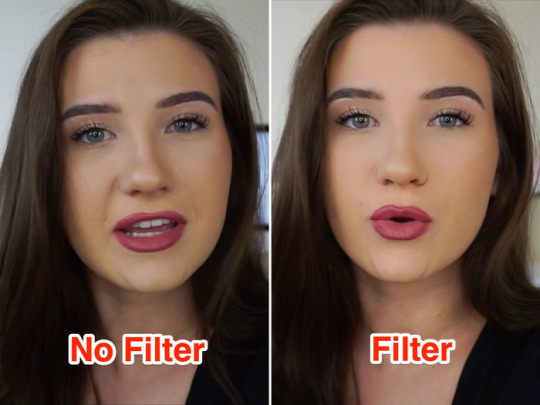
Enjoyment
Drawing parallels with other AR technologies and digital platforms, it suggests that the entertainment value of AR face filters contributes significantly to their appeal, fostering escapism and amusement (Javornik et al. 2022). With many filters incorporating humorous elements like funny virtual props, users find gratification in the enjoyable experience, akin to dressing up for themed parties (Javornik et al. 2022). Consequently, both the frequency of use and exploration of AR face filters are driven by the desire for entertainment and fun
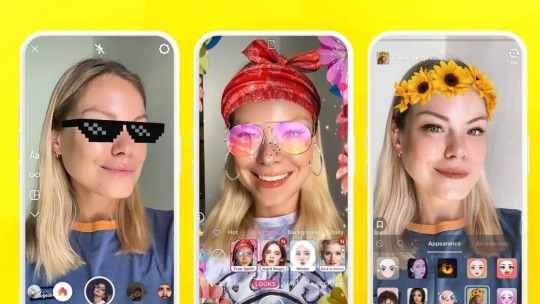
Social Interaction
While selfies are typically posted for social approval, AR filtered content serves broader purposes, such as initiating interactions and drawing attention to specific topics (Hong et al. 2020). AR filters elicit varied reactions from the audience, enhancing engagement and facilitating communication with followers (Javornik et al. 2022). Overall, the need for social interactions emerges as a significant motivator for both the frequency of filter use and exploration.
Convenience
AR filters offer convenience in creating relevant and meaningful content effortlessly (Javornik et al. 2022). Brands leverage AR try-on features for product search and decision-making in industries like makeup and fashion, eliminating the need for physical store visits. Similarly, social media users find convenience in applying AR filters for meaningful interactions without altering their appearance physically. This convenience factor is anticipated to drive both the frequency of use and exploration of AR filters on social media platforms.
In conclusion, the popularity of augmented reality (AR) face filters on social media stems from motivations like self-presentation, enjoyment, social interaction, and convenience. As the selfie trend persists and AR technology advances, these motivations will continue to shape the use of AR face filters, enriching the digital media experience.
Reference list
Erz, A, Marder, B & Osadchaya, E 2018, ‘Hashtags: Motivational drivers, their use, and differences between influencers and followers’, Computers in Human Behavior, vol. 89, pp. 48–60.
Hong, S, Jahng, MR, Lee, N & Wise, KR 2020, ‘Do you filter who you are?: Excessive self-presentation, social cues, and user evaluations of Instagram selfies’, Computers in Human Behavior, vol. 104, p. 106159.
Javornik, A, Marder, B, Barhorst, JB, McLean, G, Rogers, Y, Marshall, P & Warlop, L 2022, ‘“What lies behind the filter?” Uncovering the motivations for using augmented reality (AR) face filters on social media and their effect on well-being’, Computers in Human Behavior, vol. 128, no. 107126, p. 107126.
Rauschnabel, PA 2018, ‘Virtually enhancing the real world with holograms: An exploration of expected gratifications of using augmented reality smart glasses’, Psychology & Marketing, vol. 35, no. 8, pp. 557–572.
Sheldon, P, Rauschnabel, PA, Antony, MG & Car, S 2017, ‘A cross-cultural comparison of Croatian and American social network sites: Exploring cultural differences in motives for Instagram use’, Computers in Human Behavior, vol. 75, pp. 643–651.
Throuvala, MA, Griffiths, MD, Rennoldson, M & Kuss, DJ 2019, ‘Motivational processes and dysfunctional mechanisms of social media use among adolescents: A qualitative focus group study’, Computers in Human Behavior, vol. 93, pp. 164–175.
Vendemia, MA & DeAndrea, DC 2018, ‘The effects of viewing thin, sexualized selfies on Instagram: Investigating the role of image source and awareness of photo editing practices’, Body Image, vol. 27, pp. 118–127.
Zetlin, M 2019, Taking Selfies Destroys Your Confidence and Raises Anxiety, a Study Shows. Why Are You Still Doing It?, Inc.com, Inc.
0 notes
Text
Face Filter Evolution: Examining the field or AR Filters
Face filters have become a common tool for digital self-expression in the age of social media dominance, where selfies are everything and personal branding is crucial. With the use of these augmented reality (AR) filters, users may alter their look in real-time, improving features, adding animations, and adding fun effects to images and videos. Face filters are becoming more and more popular on platforms like Instagram, Snapchat, and other apps. This gives users a wide range of choices to improve their online profile. Let's take a closer look at face filters, their present condition, and the emergence of augmented reality filters.


Face Filters' Pervasiveness Face filters are now an essential component of using social media, having been widely adopted by sites like Snapchat. Face filters were first released as straightforward overlays to add amusing details to selfies. Since then, they have developed into complex tools with a wide range of modification possibilities. With the help of interactive effects, beauty filters, and augmented reality masks, users can now turn their ordinary selfies into eye-catching digital artwork.
The AR Filter Epidemic The next wave of face filter technology is represented by AR filters, which use augmented reality to provide engaging and interactive experiences. AR face filters provide an additional level of interaction by dynamically reacting to users' motions and surroundings, in contrast to regular face filters, which are static overlays. These filters may be used to create wacky animations that follow users' facial expressions or virtual reality experiences. AR filters have gained popularity on social media sites like Facebook and Instagram, where users may utilize Spark AR Studio to make and share their own personalized filters. Due to the democratization of filter production, a wide range of distinctive and creative filters that satisfy various tastes and preferences have proliferated. The rise in popularity of AR filters has also benefited brands and influencers, who use them as marketing tools to interact creatively with audiences.
The Effect on Identity and Self-Image Face filters are a fun and interesting way to add effects to images and videos, but there are concerns about how they may affect identity and self-perception. Unrealistic beauty standards and body dissatisfaction have been connected to the ubiquity of artificially filtered photographs on social media. Face filters, according to their detractors, reinforce unrealistic beauty standards and put more pressure on people to meet digitally modified notions of perfection. Furthermore, the growing use of AR filters casts doubt on the veracity of online interactions by obfuscating the distinction between fact and fiction. There's a chance that users may start to portray a controlled image of themselves through filters, which might undermine real interactions and encourage a culture of insecurity and comparison.
Towards the Future: The Evolution of Face Filters Face filters have countless possibilities in store as technology develops further. The possibilities for innovation are endless, ranging from AI-powered filters that provide incredibly realistic changes to filters that work perfectly with virtual and augmented reality experiences. Face filters should be seen critically, though, as we accept new technological advances and take into account how they may affect social interaction, identity, and self-perception. In summary, face filters have completely changed how we engage with digital media by providing a medium for artistic expression and self-representation. With the introduction of AR filters, a new era in filter technology is beginning, one in which interaction and immersion become paramount. Maintaining authenticity in our online connections while embracing innovation must be balanced as we traverse this changing terrain.
0 notes
Text
Crowds that are funded = CrowdFunds
I love creating content. I also love putting out content for my 162 subscribers on YouTube, if it is still at 162 subs. I can still manage it on my own. But what about content creators who are growing and aren't really sponsored by certain brands? Now if you asked me and my opinion, crowdfunding can be an effective tool when it comes to helping building a community for the creative minds. Platforms like Patreon, Ko-Fi helped artists, graphic designers, beginners or professional filmmakers (who aren't tied to a huge distribution company, singer-songwriters, chefs, bakers, and also content creators to not only help fund their projects, or continue to keep their brands alive, but to also allow them to connect directly with their audiences/subscribers, and build a community around their work.
Before we get into the question does crowdfunding actually help content creators or those in the creative industry, let's get a little into what crowdfunding is. In an article translated to English originally published by Greek author Zorica Golić in 2014, Golić has states that crowdfunding has become this alternative financing option, especially for projects that struggle to obtain loans from traditional sources like banks or investors. Dannberg, T. describes crowdfunding is a form and part of crowd sourcing, and the typical user of a crowd sourcing platform is described as a middle to old, middle to upper-class, highly educated, married white man with high-speed internet connection.
Other than being a platform to help fund content creators, these crowdfunding platforms also serves as something that motivates creators and contributes to a sense of community. Additionally, crowdfunding helps build a sustainable fan base by connecting with backers, turning them into long-term supporters, as stated by Dannberg, T., 2017. But with it’s positive look, it also has this negative outlook to it. Now with the attention of social media, it has brought not only the interest but also scrutiny when it comes to crowdfunding as stated by Chin, Jones, McNutt & Pebler, 2014. Furter explained by Chin, Jones, McNutt & Pebbler, this draws criticism on duped funders, projects done by celebrities and movie studios whose main motive is to continue on exploiting their fans and audiences into funded projects they themselves can fund.
Examples I can see from my own personal observations The Try Guys, Watcher, while both were part of Buzzfeed, people associated with the company like Eugene Lee Yang, Zack Kornfeld, Keith Habersberger (Try Guys), or Ryan Bergara, Shane Madej, and Steven Lim (Watcher) eventually branched out and started their own companies. As someone who used to subscribe to The Try Guys' patreon, these crowdfunding sites allows fans to view scenes that were not included in their uploaded content on YouTube, early access to more videos or videos scheduled for release from days to a week ahead, or ability to have their feedback and suggestions taken by these content creators for their future content. Another example would be PBS Eons. People who subscribed to their Patreon would be given a shoutout at the end of the videos, but it depends on the rankings of contents they chose to subscribe. But these businesses had already gained a number of exposure, fans and followers that getting the financial support for crowdfunding wouldn’t really be an issue. So take a look on Jon Widegren. Widegren planned on traveling across the United States to really enjoy as well as getting inspiration from burger joints he visited. Widegren spent 3 more months in the States before returning to Stockholm and got to work on he’s new project, Flippin’ Burgers, which was a success thanks to crowdfunds.
In conclusion, does crowdfunding helps the creative industry and community? Yes. Yes it does. I’ve seen it help my friends who were art students who used Ko-Fi, Patreon to help fund their budget to fund their art supplies. And it has also helped me as a writer. I get paid to write certain stories on platforms like Tumblr for fans and in turn, I would be given small donations in my Ko-Fi account to help me financially and my research for any of these stories I’ve been commissioned to write.
References
Golić, Z., 2014. Advantages of crowdfunding as an alternative source of financing of small and medium-sized enterprises. Zbornik radova Ekonomskog fakulteta u Istočnom Sarajevu, (8), pp.39-48, viewed 26 November 2023.
Dannberg, T., 2017. Advantages and disadvantages with crowdfunding:-and who are the users?, viewed 27 November 2023.
Bennett, L., Chin, B. and Jones, B. (2015) ‘Crowdfunding: A New Media & Society special issue’, New Media & Society, 17(2), pp. 141–148, viewed 26 November 2023
‘Flippin’ burgers – sthlm’s best’, Truck Stop El Bulli, viewed 28 November 2023, <https://truckstopelbulli.wordpress.com/2013/01/30/flippin-burgers-sthlms-best>
0 notes
Text
WEEK 8: Can crowdsourced information during times of crisis (e.g. pandemic, natural disasters) mobilise the public into action (e.g. get to safety, assist those in need, communicate important information, etc.)?
Crowdsourced information becomes critical in mobilizing the public in times of crisis, ranging from covid 19 pandemics to catastrophic events. The article analyses the symbiotic link between crowdsourced information, social media platforms, and the affordances they provide in influencing our social experiences during crises. We will investigate how these aspects interact to promote collaborative action and reaction through an in-depth examination of a case study.
The Interplay of Crowdsourced Information and Social Media Platforms. Firstly, during a crisis, crowdsourced information, which is frequently shared through social media platforms, allows for rapid distribution of real-time updates. For example, Twitter is a dynamic platform where users engage with providing important information ranging from evacuation routes during emergencies to vaccination centre locations in the event of a pandemic (Wen 2020). Moving on, Different social media platforms provide unique affordances that help to trendy mobilization, Twitter's Real-Time Updates allows users to instantly share and receive time-sensitive information. Community Engagement on Facebook allows Facebook's group features enable community organizing and support activities. Moving on, Instagram's Visual Storytelling which is the visual element of Instagram allows for compelling storytelling, encouraging empathy and understanding (Bagla 2020).

To elaborate more, we will be using a case study which happened in Covid-19 pandemic response, crowdsourced information was critical in sharing information about the virus, preventive measures, and healthcare services during the early phases of the COVID-19 pandemic. Social media platforms have evolved into a major area for users to exchange and access critical information, hence increasing public awareness (Kushner 2023). Next, community support programs have emerged on social media sites, notably Facebook. Local associations organized to help needy communities with grocery shopping, prescription distribution, and other necessities. The platform's group features aided in the organization of community actions (WHO 2021). Moving on, Instagram provided an environment for graphical stories that are humanizing the pandemic's impact. Stories of frontline workers, individual difficulties, and acts of generosity went viral, creating a feeling of shared experience and inspiring communal responsibility (Instagram 2020).


Next, we will be looking on the social experiences and affordances. To elaborate on, during a crisis, social media platforms foster a sense of community. The capacity to share experiences, express empathy, and aid builds a virtual community that overcomes geographical boundaries. This sense of belonging is critical in organizing people to take collective action. Taking account to platforms like Twitter, with their retweet feature, enable important messages to be quickly amplified. Evacuation instructions or appeals for aid, for example, could reach a large audience in minutes, spurring quick replies (Stieglitz 2017).
To conclude, during times of disaster, crowdsourced information and social media platforms are critical for mobilizing individuals into action. The interaction between these aspects, enhanced by each platform's specific affordances, changes our social experiences and drives collective reactions. The COVID-19 pandemic case study demonstrates how information distribution, community support activities, and multimedia communication can all lead to a shared feeling of responsibility and action. Moving forward, understanding the symbiotic link between crowdsourced information and social media platforms is essential as we navigate an increasingly connected world. By properly utilizing these tools, we may not only broadcast critical information but also develop a feeling of community and solidarity, eventually mobilizing individuals to take meaningful actions in the face of disaster.
Wen, T 2020, “how coronavirus has transformed the way we communicate”, BBC, 9 April, viewed 20 November 2023, <https://www.bbc.com/worklife/article/20200408-coronavirus-how-lockdown-helps-those-who-fear-the-phone>.
Bagla, S 2020, “Instagram vs facebook vs twitter vs snapchats: which is better for business marketing”, Techmagnate, 10 September, viewed 20 November 2023, <https://www.techmagnate.com/blog/instagram-vs-facebook-vs-twitter-vs-snapchat-which-better-business-marketing/#:~:text=Instagram%20and%20Snapchat%20are%20dedicated,on%20both%20Instagram%20and%20Facebook.>.
Kushner, J 2023, “The long shadow of Covid-19 myths”, BBC, 29 March, viewed 20 November 2023, <https://www.bbc.com/future/article/20230328-the-long-shadow-of-covid-19-myths>.
WHO, 2021, “WHO, Facebook and Praekelt.Org provide critical mobile access to COVID-19 information for vulnerable communities”, 11 August, viewed 20 November 2023, <https://www.who.int/news/item/11-08-2021-who-facebook-and-praekelt.org-provide-critical-mobile-access-to-covid-19-information-for-vulnerable-communities>.
Instagram, 2020, “Keeping People Informed, Safe, and Supported on Instagram”, 24 March, viewed 20 November 2023, <https://about.instagram.com/blog/announcements/coronavirus-keeping-people-safe-informed-and-supported-on-instagram>.
Stieglitz, S 2017, “Understanding Sense-Making on Social Media During Crises: Categorization of Sense-Making Barriers and Strategies”, ResearchGate, 24 October, viewed 20 November 2023, <https://www.researchgate.net/publication/327332865_Understanding_Sense-Making_on_Social_Media_During_Crises_Categorization_of_Sense-Making_Barriers_and_Strategies>.
0 notes
Text
Big Data VS The Little Guys
or "Will decentralised networks become a bigger, more mainstream part of the Internet, thus emphasising crowdsourced content and information?"

Earlier this year, I became an admin for a Discord server, so I was expected to engage with its members. One person in the server stood out, he explained to me that he runs an online marketing firm in Chicago, then he said he wanted to show me something. He told me to search up a Wikipedia article, telling me to look at the image file at the top on the article. I looked at the user who uploaded that image file and I was surprised to find that it was he that created and uploaded that image onto Wikipedia, and it made sense because of his online marketing background. No one asked him to devote his time and effort to do that, but maybe out of a sense of innate duty or maybe he had time to spare, he decided to create that image which is now associated entirely with that topic. The Internet is a what it says on the tin, an interconnected network. Who could have guessed? The Internet consists of a functionally infinite number of points weaved together with hyperlinks and cross-references, forged from the combined effort of countless users who add on to the vast body of work that is the online experience. But who is responsible for it being like the way it is? It might seem contradictory to the title of this blog entry, but I want to suggest that the Internet in its modern recognisable form is the way it is today because of the success of decentralised networks in the past and present, which had always depended on crowdsourced content and information.
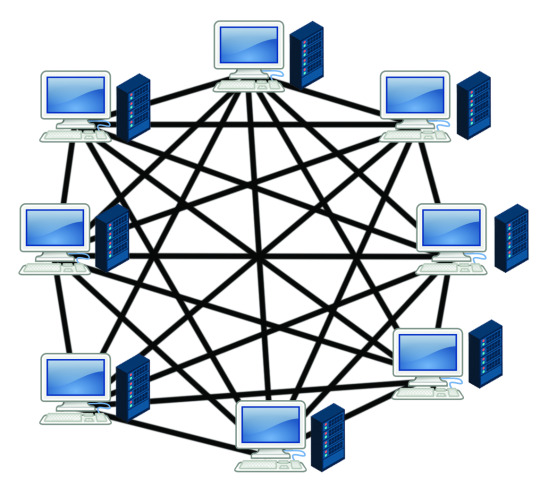
A Decentralised Interconnected Network?
In the advent of what really became the Internet occurred between the late 90s and early 2000s where we can observe the phenomenon of textboards where people would have discussions with other users, and blogs where users would write about any subject under the digital sun. This early unregulated “laissez-faire” approach to the growth of the Internet meant that individual communities and their users would be the ones churning out content with no fear of a central regulatory authority like we see today that could impose rules that today seem part and parcel of the Internet but would retrospectively seem almost draconian in nature. This was especially true after the Dot-Com Bubble burst in the early 2000s when created a massive evolutionary bottle neck in terms of the countless tech companies going bankrupt, where 52% of all internet-centred firms when bust when the stock market crashed. Imagine if today, half of the entire Internet just disappeared. The Dot-Com crash put many people off investing in anything related to the internet for many years and would only pick back up in the later 2000s with the rise of firms like Alphabet Incorporated, Amazon Incorporated, and Facebook Incorporated, now of course Meta Platforms Incorporated. In those dark years after the stock market crashed, it was up to the users online to fill in the vacuum that was left with a sort of Mad Max style approach where it was up for grabs due to the lack of any attempt to monopolise or centralise the web by corporations or governments. In the new algorithmic medium that is the Internet, collective intelligence and combined creative energy emerges bottom-up from the multitude of actual human knowledge, in this case, the Internet is built in a way that naturally facilitates decentralised networks growing and being an integral part of the Internet.
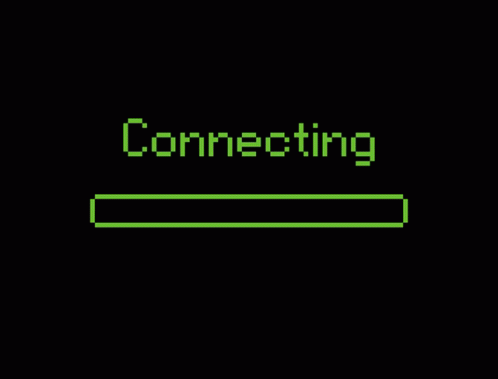
To conclude, the question of whether decentralised networks could a bigger force and become a more mainstream part of the Internet is really a sort of nonquestion as decentralised networks is practically the backbone of the Internet. Going back to the story I told in the beginning, he was just someone with an idea and the means to put his thoughts into a reality. The Internet is a summation of the concept of the wisdom of the crowds, and the idea of crowdsourced content and information created by the users themselves is inherent to the spirit of the Internet. This interestingly enough makes the decentralised networks on the Internet ideally the closest things we can get to perfect democracies where it is the users who are in charge of the content they produce, who is allowed into their circles, and how they wish to present themselves to the greater ecosystem.

References
0 notes
Text
Crowdsourcing

WHAT IS CROWDSOURCING
Crowdsourcing can be defined as a method of obtaining required knowledge, goods, or even services by using a large crowd of people in which they submit their answers and data through an online source whether it be through social media or any smartphone application (Hargrave 2022). Crowdsourcing generally involves individuals who are requested by certain entities whether it be from a particular individual or from a whole organization itself to gain specific types of resources. Usually, these entities rely on crowdsourcing to gain and increase knowledge regarding the goods and services provided by them through the internet, or more specifically through social media (Pratt 2023). People who are involved in crowdsourcing or are invited to be part of crowdsourcing are normally freelancers but it still depends on the type of information that is required to be obtained or what services are needed to be provided most of the time people join in on crowdsourcing on a voluntary basis (Open Innovation 2023).

ADVANTAGES OF CROWDSOURCING
There are a few advantages of using crowdsourcing as a method of gaining knowledge and information regarding the goods and services provided by the entities. The advantages of crowdsourcing are as follows:
Cost-Effectiveness
When it comes to managing a business, the topmost concern of a business is always prioritized which is cost management and profitability. When it comes to crowdsourcing, only a one-off payment to the participants who came up with the idea from crowdsourcing is required and no additional fees are to be paid (Brown 2023).
2. Fresh Perspectives
Comparing both employees of the company and a crowd, the big difference is that a crowd does not have any bias towards a company or business and they are able to bring in new ideas or even show new perspectives towards problem-solving and discovering new solutions in order to address any of the issues the business has been struggling to handle. Crowdsourcing allows a bigger perspective of solutions to be found due to the fact that crowdsourcing involves diverse groups of people (MasterClass 2022)
3. New-Hiring
Crowdsourcing is a great method for individuals involved to showcase their talents and skills through solving the challenges that are provided to them. This indirectly allows business and companies the opportunity in seeing the talents and methods used by the individuals of the crowdsourcing in solving the challenges that are given to them (Bakire 2023). The problem solving skill that comes with the individuals from the crowdsourcing can prove to be a very reliable asset to the business or company as some issues from projects are not able to be shared publicly due to confidentiality.
CROWDFUNDING
Crowdfunding can be defined as a method of raising capital through the effort of many individuals or organizations whether it be friends family or even individual investors to invest in a small amount of capital to start up a business or even to support a current business. This also allows these individuals the ability to be directly involved and be a part of the business's internal growth (Luczynski 2019). Currently, there are a few popular and trustable crowdfunding platforms such as GoFundMe. GoFundMe has been the world’s largest fundraising platform since 2010 (GoFundMe 2023). Crowdfunding not only uses crowdfunding platforms but also uses social media as a means to attract more investors.
There are 2 types of crowdfunding. These 2 types of crowdfunding include Donation-based funding and Investment Crowdfunding. Donation-Crowdfunding is defined as an amount of funds that are provided and contributed to the projects of a company or business by donors. These investments by donors are usually promised a return if the product or services that are provided by the projects have high revenue returns (Candid 2023). Investment crowdfunding can be defined in where businesses or companies sell their ownership stakes online in the form of equity or even debts, Investors can become owners or even stakeholders of the company and can expect potential benefits, especially in terms of financial return (Chen 2022).

CONCLUSION
Crowdfunding can be seen as a method of obtaining knowledge about goods and services that are provided by the business through a large group of people who are un-bias to the company or business and have a more neutral standing compared to having the employees of the company as a source of information gathering. Crowdsourcing also helps businesses in cutting costs, finding newer talents for hire and even helping the business or company to have a new and fresher perspective in tackling the challenges faced by them. Last but not least, crowdfunding is the method in which capital investments are raised through multiple sources whether it be from specific individuals making donations through donation-based funding or investors investing in the company through the investment crowdfunding method of buying ownership stakes in the form of equity of the business or company.
References
Bakire, H 2023, ‘Crowdsourcing: The top 5 advantages & disadvantages’, HeroX, viewed 14 November, 2023, <https://www.herox.com/blog/972-the-top-5-crowdsourcing-advantages-and-disadvantag>.
Brown, M 2023, ‘11 benefits of Crowdsourcing New Product Design at your company: CAD crowd’, Cad Crowd | CAD design services, 3D modeling, 3D animation, CAD drafting, engineering & 3D printing design, viewed 14 November, 2023, <https://www.cadcrowd.com/blog/11-benefits-of-crowdsourcing-new-product-design-at-your-company/>.
Chin, B 2023, ‘Week 8: Crowdsourcing’, MDA 20009, lecture, Swinburne University Of Technology Sarawak, Kuching.
Chen, J 2023, ‘Investment crowdfunding: What it means, how it works, benefits’, Investopedia, Investopedia, viewed 14 November, 2023, <https://www.investopedia.com/terms/i/investment-crowdfunding.asp>.
Candid, ‘Trainings in nonprofit fundraising, proposal writing, grants’, Candid Learning, viewed 14 November, 2023, <https://learning.candid.org/resources/knowledge-base/what-is-crowdfunding/>.
Go Fund Me 2023, ‘About GoFundMe: GoFundMe UK’, GoFundMe (UK), viewed 25 November, 2023, <https://www.gofundme.com/en-gb/c/about-us#:~:text=Through%20GoFundMe%2C%20people%20and%20organisations,world%27s%20largest%20social%20fundraising%20platform>.
Go Fund Me 2023, ‘Comparing the top online fundraising and crowdfunding platforms’, Crowdfunding, Go Fund Me, viewed 25 November, 2023, <https://www.crowdfunding.com/>.
Hargrave, M 2022, ‘Crowdsourcing: Definition, how it works, types, and examples’, Investopedia, Investopedia, viewed 7 November, 2023, <https://www.investopedia.com/terms/c/crowdsourcing.asp>.
Livescault, J 2023, ‘What is crowdsourcing? (in 2023)’, Braineet, viewed 7 November, 2023, <https://www.braineet.com/blog/crowdsourcing>.
Luczynski, M 2019, ‘What is crowdfunding?’, Medium, Medium, viewed 14 November, 2023, <https://medium.com/@matthewluczy/whatiscrowdfunding-606b141ce53d>.
Pratt, MK & Gonsalves, C 2023, ‘What is crowdsourcing?: Definition from TechTarget’, CIO, TechTarget, viewed 7 November, 2023, <https://www.techtarget.com/searchcio/definition/crowdsourcing>.
Masterclass 2023, ‘What is crowdsourcing? 3 benefits of crowdsourcing - 2023’, MasterClass, viewed 14 November, 2023, <https://www.masterclass.com/articles/crowdsourcing#10w8MUVWLF5mXxVYBRckcO>.
Smith, T 2023, ‘Crowdfunding: What it is, how it works, and popular websites’, Investopedia, Investopedia, viewed 14 November, 2023, <https://www.investopedia.com/terms/c/crowdfunding.asp>.
1 note
·
View note